


































By Donovan Darling, Staff Writer
Everyone has heard the saying ‘Dog Days of Summer,’ but what are they, when are they, and what does it even mean?


The Dog Days of Summer stretch for 40 days from July 3 to August 11, referring to the especially hot and humid summer months in the Northern Hemisphere, yet their roots began with ancient civilizations.
The Dog Days of Summer coincide with the dawn rising of the star Sirius, also known as the Dog Star. Part of the constellation Canis Majoris (the “Greater Dog”), this is where Sirius gets its canine nickname, as well as its official name Alpha Canis Majoris. Apart from our own Sun, sometimes known as Sol (Latin for “sun”), Sirius is the brightest star in the sky.

Way back in ancient Rome and Greece, the Dog Days of Summer were thought to be a season of drought, unrest, and bad luck, where men and dogs would go mad due to the heat. More so, the combination of Sirius’ light and heat with the Sun’s was thought to affect men and women, animals and plants, even blighting the bark from tree trunks. These days we don’t think of the Dog Days so dramatically – and mostly farmers are concerned with them – but rather, we think of them as a period of peak summer temperatures and humidity.
In ancient Greece, Rome, and Egypt, all known for their extensive knowledge of astronomy and science yet still rooted deeply in folklore and superstition, they believed that the heliacal (“at sunrise”) rising of Sirius during this period caused the blistering seasonal heat. More specifically, that the heat of our own Sun and super-bright Sirius combined caused this “scorching” heat. The name “Sirius,” from the Ancient Greek seírios, even means “scorching.” For the ancient Egyptians specifically, the dawn rising of Sirius (also known as Sothis to the Egyptians) coincided with the flooding of the Nile River, and they used the star as a “barometer” to help predict when the flooding would occur. Contrary to ancient belief, we know now that the dawn rising of Sirius does not affect seasonal weather, but its appearance during the hottest part of summer does keep the folklore of the Dog Days alive and well.

Dog days bright and clear Indicate a good year; But when accompanied by rain, We hope for better times in vain.
(Henry Harrison Chase Dunwoody’s “Proverbs Relating to Months, Weeks, and Days”)








By Dennis McNabb, Contributing Writer
n today’s fast-paced, ever-evolving world, facing a constant barrage of new and compelling information means that we are always grappling to find clarity of purpose. It is increasingly rare, it seems, to meet people who are calm, composed and resolute in their goals. That is why it is such a breath of fresh air to speak with someone like artist, curator and arts organizer Tammy Jo Wilson. Not only is she committed to said objectives, but it’s for the betterment of all — for making this world a better place.
In her own words, reflected on her website, Tammy Jo seeks to, “Share through [her] work an expanded view of the black female experience in the 21st century. [She is] speaking to those among us that are looking for a broader understanding of commonalities rather than differences.

Historically rooted in the feminist art movement [her] work attempts to further the unraveling of antiquated thinking around women in art and society. [She offers] a visual entrance to an expanded view of the black female experience and the raw realities faced by marginalized people.”
She goes on further to state, “[Her] practice has evolved over the past 10 years to be less about individual identity and more reflective of cultural and societal understanding of inflicted identity versus projected identity. And she is “Interested in pushing back against what the Western art canon tells us black women’s art is, or should be.” It’s this last point I find most compelling in her work. Because as clear as her vocalized intent is, her absolutely gorgeous but sometimes eerie and abstract pieces are far less transparent. The true depth and meaning behind each piece is cleverly disguised under layers of symbolism and only revealed after careful study.
Tammy Jo is the quintessential artist. Encouraged at a young age, she began studying under professionals in high school. With both a Bachelor’s and Master’s Degree in

Fine Arts, she has traveled every state in the country expanding and honing her craft. She has taught multiple classes and for the past 14 years held the position of Visual Arts and Technology Program Manager at Lewis & Clark College. In 2017, she co-founded Art in Oregon (AiO), a statewide visual-arts-focused nonprofit working to build bridges between artists and communities. In 2022, she also became Director of the Bush House Museum Exhibits & Programming.

Never one to rest on her laurels, Tammy Jo was recently involved in the Black Artists of Oregon Exhibition, a historic retrospective she was incredibly proud to be a part of. In May, she exhibited some of her most recent work (including her first full-sized wall mural) at the Souvenir Gallery in Portland. She is also working on an upcoming documentary short film series with MOsley WOtta called “Sketch and Release,” which will highlight black artists in Oregon.
For more information, follow her on Instagram: tammyjowilsonart or check out www.tammyjowilson.com.
These



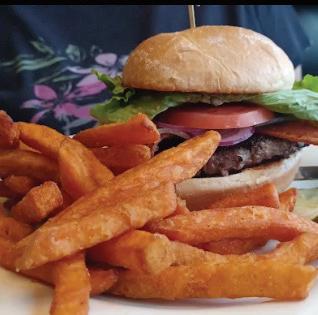











“Peaches, Peaches, Peaches, Peaches, Peaches .” What to say about this iconic blockbuster from last year? It’s gorgeously animated, incredibly scored and a smash hit for a new generation of kids, as well as adults old enough to remember playing the Nintendo Entertainment System in the ’80s and ’90s (myself included). While not in the traditional Nintendo continuity (if I can nerd out for a second), this watches like fan fiction and an ode to Nintendo and Super Mario Bros. nostalgia, piled high with references from various video games and consoles throughout the years. Contrary to the games, Mario is not rescuing Princess Peach, but rather she is training him to become strong enough to rescue his brother Luigi and save the world from Bowser. It’s funny, fast-paced and great for the whole family. Starring Chris Pratt (Mario), Charlie Day (Luigi), Anya Taylor-Joy (Peach), Jack Black (Bowser) and many more. Rated PG for action and mild violence.


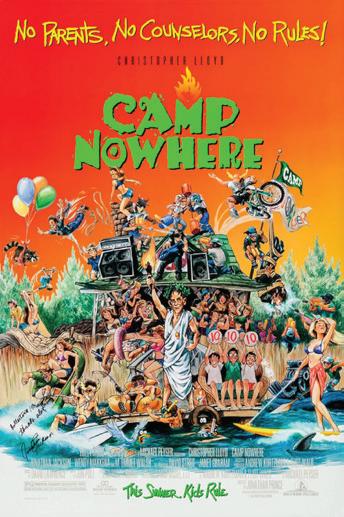
“Dad! Just because I'm smart doesn't mean I can't act stupid.” Camp Nowhere is a forgotten cult classic and perfect summer movie. Summer is approaching and a large ragtag group of middle school kids are being forced into summer camps — computer camp, fat camp, boot camp, you name it — and the kids want no part of it. Through serendipity, “Mud” (Jonathan Jackson) runs into ex-actor Dennis Van Welker (Christopher Lloyd) and convinces him to dupe all the parents into believing the kids have agreed to go to their respective summer camps, while in reality they pocket the money, rent an empty camp, and proceed to blow their cash on toys and junk food. In the vein of “Big” with Tom Hanks, it’s a kid’s free-for-all movie and cautionary tale of excess, with many lessons learned in responsibility, personal safety and maturity. It’s funny, silly and deeply nostalgic. Rated PG, this feels like a light PG-13 due to language and mature “teen” content.
“Goonies never say die!” As I recently visited the Goonies House and the old County Jail in Astoria, this movie is even more soaked in nostalgia and local lore for me. Filmed in Astoria and nearby beaches, this is a classic ’80s “kids have an adventure” movie with Scooby Doo/Hardy Boys vibes — there’s a jailbreak, criminals, skeletons, secret passages, and pirate maps and treasure. When they find a treasure map in their father’s old museum antiquities, Mikey (Sean Astin) and his friends decide this could save his house from foreclosure, with older brother “Brand” (Josh Brolin) and his friends in tow on their crazy adventure. It’s a cheesy, funny, coming-of-age romp perfect for a summer afternoon. Also starring Corey Feldman and Ke Huy Quan. While rated PG, this feels like a strong PG-13 with language, violence and mature “teenage” content.
Stream these movies where available, or rent from your local movie store, library or rental kiosk.





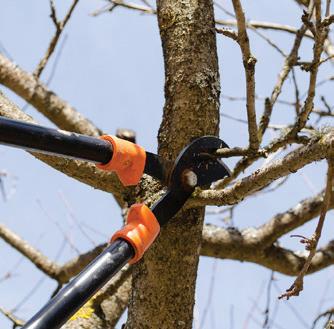








OREO COOKIE
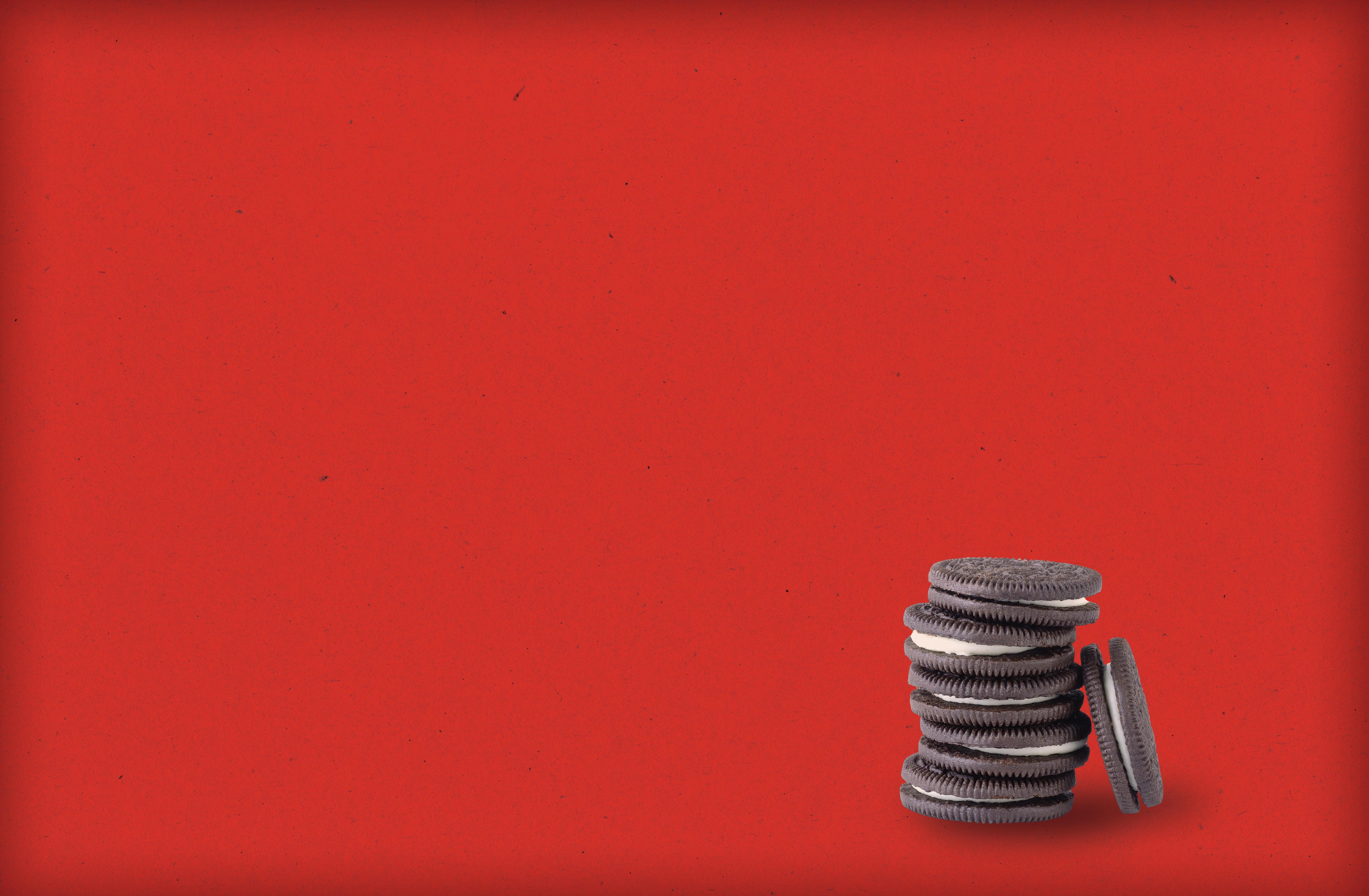

he Oreo cookie. Two chocolate wafers with a creamy vanilla filling sandwiched between them. A perennial favorite for decades, Oreos are loved by millions around the world, with one major debate baked into its delicious existence, which revolves around the best way to eat them: dunk or twist. There are two opposing camps: Twisters and Dunkers. The former maintain that the best way to eat an Oreo is to twist them apart and enjoy each side separately; some eat the creamy center first. The latter, on the other hand, insist the cookie should be dipped into milk and allowed to basically melt in your mouth. Either way, both camps agree this classic cookie is downright delicious! Of course, there are those of us who don’t belong to either side and simply savor the Oreo as a tasty sandwich cookie. In 1898, several competing baking companies merged to form the National Biscuit Company, also known as Nabisco. In 1902, Nabisco introduced Barnum’s Animal Crackers for the first time, gaining fame by packaging them in small boxes designed like animal cages at the circus, and featuring an attached string for hanging the boxes from Christmas trees.
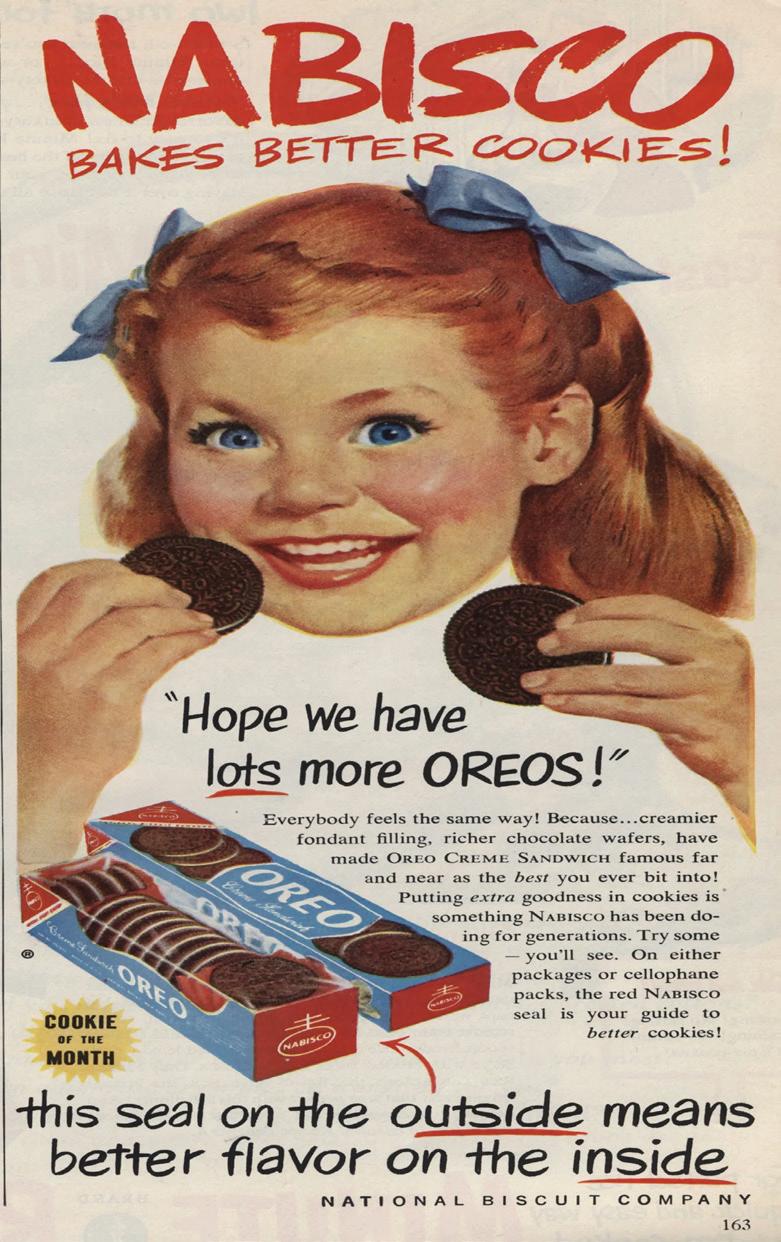
surrounding a flat cream filling had already been introduced: Since 1908, Sunshine Biscuits had been producing its Hydrox cookies in Kansas City. Although Nabisco has never identified Hydrox as its inspiration, it’s difficult to deny the similarity between the two cookies. The Oreo quickly surpassed its competitor and soon reigned supreme in the sandwich cookie realm. Nabisco made certain to file for a trademark on its new cookie, which was granted on Aug. 12, 1913.
When Nabisco’s new cookie was first introduced in 1912, it appeared as an Oreo Biscuit — “biscuit” being the common word for cookie back in England and a holdover term from colonial days. In 1921, it was renamed the Oreo Sandwich before another change in 1937 to the Oreo Creme Sandwich. It wasn’t until 1974 that Nabisco finally settled on the official name: the Oreo Chocolate Sandwich Cookie. Despite the plethora of name changes over the years, most people have typically just called it the “Oreo.” The appearance of the cookie progressed from the original design, which simply featured the name Nabisco with a wreath at the edge, to the addition of two turtle doves and a ring of laurels in 1924. The more elaborate design we know today first appeared in 1954.
It was in 1912 when Nabisco had dreamed up this “new” cookie, but in truth, the concept of two crisp chocolate wafers
As for the origin of the name “Oreo,” Nabisco has no definitive answer. One school of thought asserts that the cookie’s name was derived from “or,” the French word for gold,

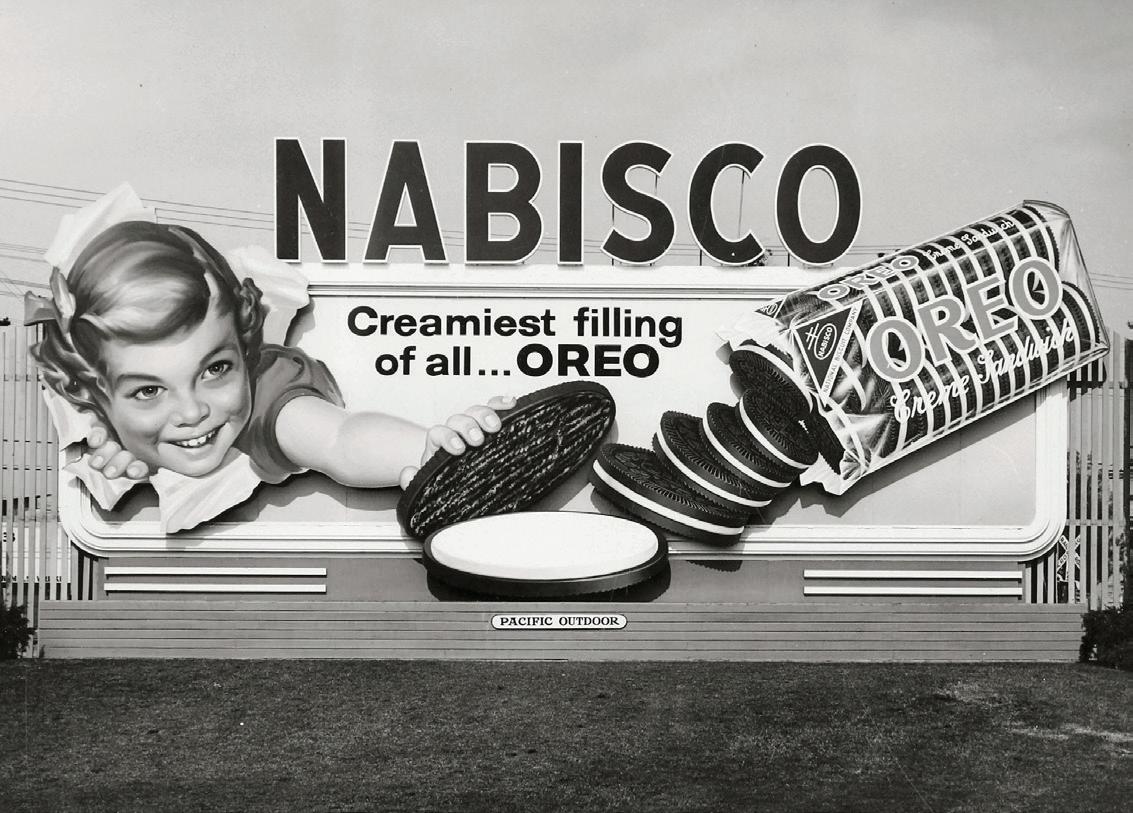
which was the primary color on the early packaging. Others maintain the name was inspired from the shape of the original cookie which resembled a mound or hill. Proponents of this theory cite the Greek word for mountain, “oreo,” as the source of the cookie’s name. Others argue the name is the result of taking “re” from “cream” and sandwiching it — like the cookie — between the two o’s in “chocolate” to make “o-re-o.”
Despite the mysterious origin of the cookie’s name, the Oreo has been a perennial hit. As of 2019, approximately 450 billion Oreo cookies have been sold since 1912, placing it atop the mountain of cookie sales and endearing it to millions of people worldwide.
Although the original recipe of the Oreo has not changed much, Nabisco has experimented with variations on the classic cookie. In 1975, Nabisco released Double Stuff Oreos to the delight of those who craved the cookie’s creamy filling. In 1987, fudge-coated Oreos hit the market, with festive holiday versions released in 1991 (Halloween Oreos) and 1995 (Christmas Oreos). Over the years, there have been numerous other iterations of the Oreo, including the Golden Oreo, Oreo Minis, Oreo
Cakesters and Oreo Double Triples.
Despite the limited edition variations, the delicious filling inside the Oreo evolved only minimally with the passage of time. The creamy filling was created


by Nabisco’s “principal scientist” Sam Porcello, who is frequently referred to as “Mr. Oreo.” His recipe, created in 1912, has remained essentially the same, though due to health concerns the company switched from the use of lard to non-hydrogenated vegetable oil to veer from trans fats.
Although the majority of Oreo production was once carried out at the Hershey’s factory in Hershey, Pennsylvania, the beloved cookie is now produced around the world in 18 different countries.
Nabisco’s marketing of the Oreo cookie has been remarkably successful, with highlights that include a 2013 tweet, “You can still dunk in the dark,” inspired by the 39-minute power outage in Super Bowl XLVII. The Guinness Book of World Records’ largest taste test took place in Madrid, Spain, in 2009 when 1,471 participants compared the taste of an Oreo to an imitation cookie.
One fun piece of trivia for cookie aficionados is that New York City’s 15th Street at Ninth Avenue is called Oreo Way in honor of it being the birthplace of the Oreo cookie.
One thing is for certain: No matter how you enjoy your Oreo cookie, be it dunking, twisting or eating as-is, this crunchy chocolate creamy delight has satisfied the palates of generations of people around the world for more than a century. Styles, technology and fashions come and go, but it’s a good bet that the Oreo cookie is here to stay.







